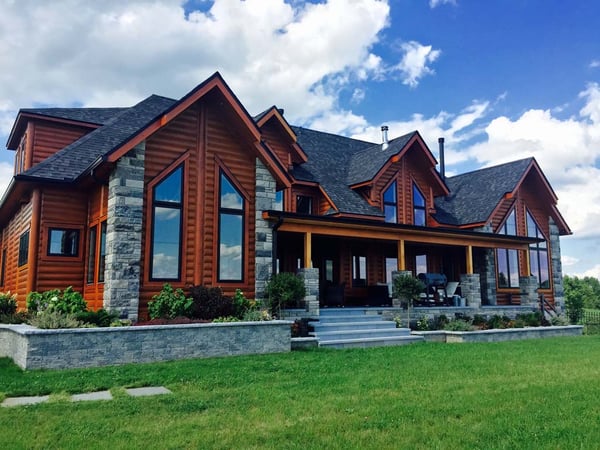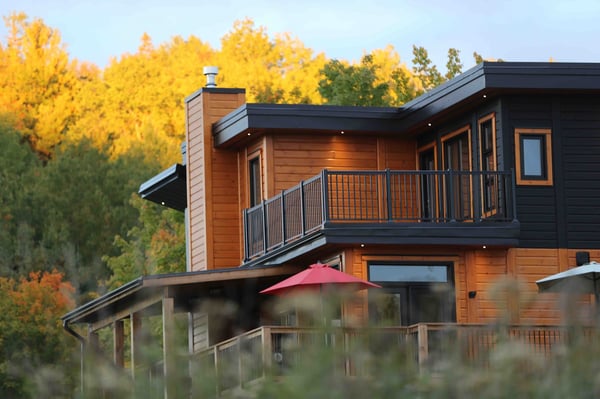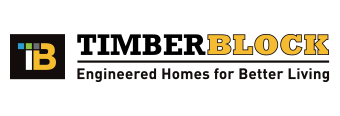"The push comes as timber becomes more cost competitive as steel prices rise, and the use of pre-fabricated wood panels allows for quicker construction with less labor..." - Bloomberg.com
The panelized wood building system continues to be more in demand as sustainability, energy efficiency, fast assembly and less on-site construction time become not a "nice-to-have," but a necessity.
Timber Block has over 40 years of construction history and has been delivering high quality engineered wood homes all over the world since its inception. Today, we're taking you on a virtual in-depth tour of our Panelized Building System, how our cutting-edge technology has resulted in our process to be considered a leader in the industry, and why Timber Block is now considered one of the top manufacturers of panelized wood homes in the world.

First...let's define "Panelized Building Systems:
The NAHB (National Association of Home Builders) defines Panelized Building Systems as "...a system that incorporates construction techniques that use advanced technology, quality materials and a controlled work environment to build energy-efficient homes in less time."
Timber Block's National Construction Manager Parker McGee, MCM, LEEP AP goes further into the meaning. "At their core, Panelized Building Systems attempt to take the flat surfaces of a structure (floor, walls, and/or roof) and create easy quick to install components that eliminate variations in quality and reduce the time under construction. The panels are assembled offsite in a controlled environment, eliminating or reducing variables such as weather, weathering, labor skill, and human error. Of particular importance, offsite assembly allows normally sequential activities to occur simultaneously, again reducing total time under construction. Time is money. When assembled in series, panels replace the traditional method of assembling different loose pieces of lumber on site and the myriad challenges associated with the older technique without the need for a different labor force."

Parker says in order to fully understand what makes the Timber Block Panelized Building System superior, you must look closely at both Structural Insulation Panels (SIPS) and traditional building.
"SIPs are the most common type of panel system on the market today," said Parker. "These panels are load bearing and come pre-insulated from the manufacturer. SIPs can be distinguished from each other by the materials employed, the type, properties, and thickness of the insulation materials, the structural strength of the panel, the level of pre-finishing, and the degree of design flexibility. Most SIPs are sandwich panels where two 4’ X 8’ OSB sheets “sandwich” a core of rigid sheet polystyrene, of varying thickness depending on desired R-value, fastened together by glue, heat, and pressure."
Parker says when given a choice, new homebuyers would be well-served by forging the traditional path, at least in part, and embrace Panelized Building Systems. "The best definition of quality in construction is conformance to plans, specifications and contract documents. Simply, how precisely does the build match the plans and specifications? Panelized construction puts this burden of quality on a controlled engineered manufacturing process which greatly simplifies and accelerates the work of the field personnel. This works to eliminate hidden human error. Extremely high quality component construction is infinitely repeatable. Poor materials or sub-standard panels can be culled well before they are ever loaded onto a truck. Production waste can be minimized and what is left, recycled. Design can be adapted to meet increased structural loads, increased thermal efficiency, and various architectural themes. Panelized Building Systems, especially SIPs, provide the new homebuyer with shorter build times, higher quality construction, sustainability, and substantially greater value for their dollar."
Parker says Timber Block specializes in an exterior wall SIP which many industry and design professionals often describe as a "modified, high tech, sustainable, SIP". "Timber Block panels arrive at the site complete. They only require a final exterior finish coat at the end of construction. The minimum R-value offered is a R-30. Depending on where your site is located, this is roughly 30-50% greater than the building code requires. The insulation used is closed cell polyurethane foam which prevents moisture from permeating the wall and home. The interior and exterior are Eastern White Pine sourced from sustainable certified forests. The coatings are low volatile organic compounds (VOC) coatings, which when topped with the final field coating, produce a 15 year warranted finish." Parker says where Timber Block panels really distance themselves from other manufacturers is in the way the panels are assembled. "The panels are composed of horizontal 7” tall sections (“blocks”) whose lengths vary depending on the plan and have a stud every 24 inches. The “blocks” are then stacked and joined with adhesives and wood joinery, then pre-stressed under 5000 lbs. of vertical hydraulic pressure, finally this constraint is captured by a series of threaded rods throughout the panel. This technique adds tremendous design flexibility and ensures the behavior of the wood remains as stable over time as it is in the factory."
The result is an incredibly stable, substantially stronger, sustainable, beautiful, wall that can be easily erected without special tools or special knowledge.

Overall, a basic understanding of Panelized Building Systems, SIPs, some general differences between panelization and traditional construction and what differentiates Timber Block’s system from the traditional and generic is a good foundation to begin building planning. "With this primer, new homebuyers can begin to make informed decisions about the type of construction and materials that make the most sense for their building project," said Parker. "For new home buyers who want to save significant money on energy, maximize the value of their construction budgets, and/or just want a robust net-zero home platform, Timber Block’s system should be at the top of the list for consideration."

You can read the rest of Timber Block's 3-part series, "Why Timber Block?" here:
Why Timber Block, Chapter 2: "How Timber Block Maximizes Energy Efficiency"
Why Timber Block, Chapter 3: "Timber Block’s commitment to green building practices and materials"
Timber Block is a proud partner of Mike Holmes and is pleased to be considered Holmes Approved. Timber Block has recently announced the integration of the 3-Step Mike Holmes Inspection Program, allowing our homeowners to be more confident than ever in their choice to build a Timber Block home.
To learn more about Timber Block, contact us below.


